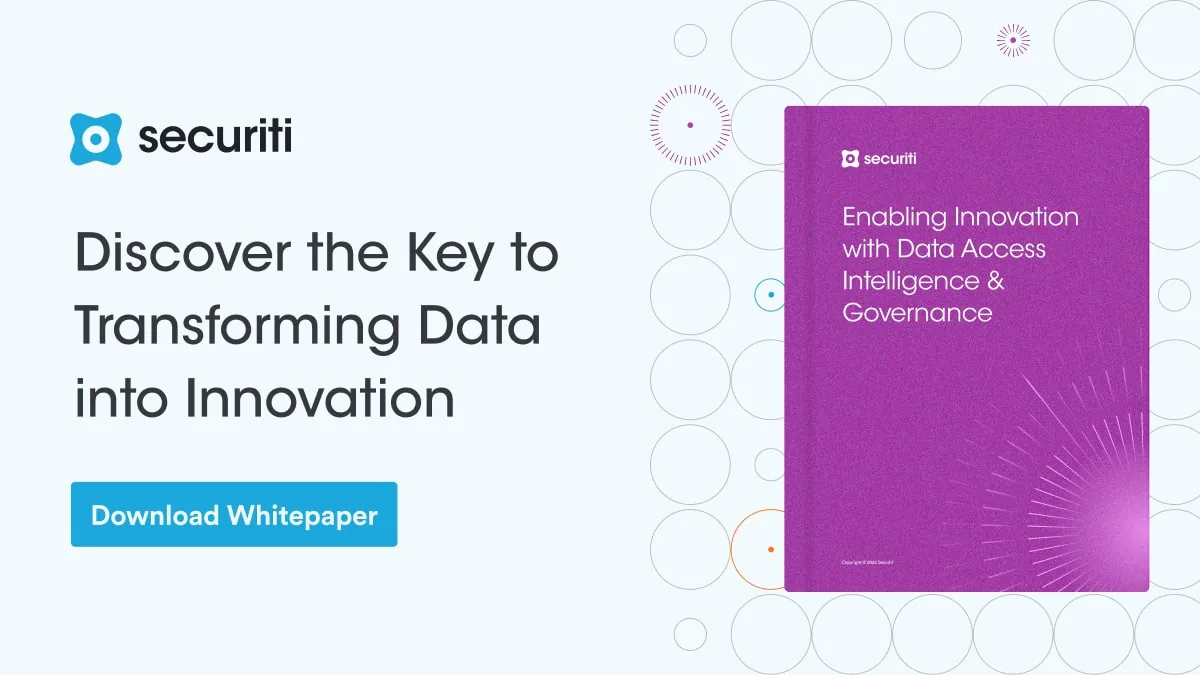Data plays a crucial role in the financial services industry, whether it's consumer-facing or commercial. It enables organizations to drive business insight and profitability through numerous activities such as cross selling, up-selling, new customer acquisition, and customer retention. As a result, the amount of data being collected in various data systems, including cloud data lakes and warehouses, is growing at an unprecedented pace. However, scattered throughout this data landscape is sensitive and personal information that must be carefully managed.
Most data security teams in financial services organizations wrestle with the challenge of protecting sensitive data while ensuring that it can be leveraged to drive innovation and business insights. It would be much simpler to keep the data safe by locking it down, but that inhibits business opportunities and revenue through strategic use of that data. Yet if the data is too accessible, it leaves financial organizations vulnerable to sensitive data exposure, ransomware attacks, and regulatory censure. Putting the right controls in place to protect your data enables organizations to drive maximum value while limiting risk.
A key component to achieving this balance is having a complete understanding of what sensitive data exists, where it is located, who has access, and how to build guardrails to enforce data protection and regulatory compliance.
360 Degree View of Sensitive Data Access
One of the key challenges financial organizations face is the lack of visibility into the sensitive data contained within their vast number of systems and repositories and who can access that sensitive data. These organizations can have hundreds of data systems where identity access is managed, leading to millions of permutations and combinations of access scenarios. To effectively leverage access management tools, there is a need to understand the underlying sensitive data that a role or user has access to as well as the policies that control those permissions. Sensitive data intelligence paired with identity access management enables financial organizations to get a true 360-degree view of user and role access to sensitive data, including:
- What systems contain sensitive data
- What sensitive data exists within these systems
- What users and roles have access to this sensitive data
- Where geographically the data is located
- What regulations apply to this data
Financial organizations need a solution that can provide automated insight into user and role access to data systems paired with sensitive data intelligence for those systems. This holistic view enables companies to create an accurate mapping of who has access to what sensitive data and provide best practice recommendations to strengthen security posture and adhere to compliance requirements.
Enabling Automated, Secure Data Sharing In Finance
The finance industry is striving for digital transformation, and looking to enable maximum use of data within corporate enterprises. One of the key initiatives in finance, as part of digital transformation, is enabling data sharing both internally and externally with business partners to increase revenue, maximize margin, and drive business value. Gartner highlights that “Data and analytics leaders who share data externally generate three times more measurable economic benefit than those who do not.”
Though sharing data internally and externally can have huge financial benefits, privacy regulations and risk of breach make cybersecurity leaders extremely hesitant to share data that may include sensitive information. For example, if a user has not provided consent for their data to be used by a third party, companies must ensure that the user’s personal information is obfuscated. A key way to share data while protecting sensitive information is through data masking. This enables organizations to change the values of the sensitive data while using the same format. The goal is to create a version of data that users, such as data scientist, business and marketing analysts, can still get business value from while ensuring no risk of exposing personal or sensitive information contained within.
Sounds great, doesn’t it?
However, often the task of masking sensitive data is an arduous, manual process. Most financial companies are faced with the difficult and time consuming tasks of identifying specific sensitive data that should be masked, then applying masking at scale to specific columns, across hundreds of thousands of tables. In today’s rapidly changing, multi-cloud environments, this process is not practical.
Organizations should look for a solution that automates data masking by:
- Automatically identify sensitive data within the enterprise
- Automatically tag sensitive data with metadata that indicates its type of sensitivity (i.e. SSN, DOB, PHI, etc.)
- Create policies that automatically mask sensitive data across broad data sets and repositories, integrating with native system capabilities as appropriate
- Dynamically mask data for specific users or roles, based on tags and labels on sensitive data
Put Access Guardrails Around Sensitive Data
Most financial organizations have limited ability to granularly control access to sensitive data, especially with today's rapidly evolving cloud environments. While identity access management systems help control access to various data systems, they do not have visibility into what sensitive data is inside these systems. In addition, controlling access to data is an extremely difficult, time consuming and error prone process. This makes it challenging for the financial industry as a whole, that increasingly has to deal with various regulations that govern what types of data can be accessed from what geographies by what types of users. Often organizations find that they have inadvertently allowed access too broadly.
So how do organizations strike the balance of protecting their most sensitive data while also not inhibiting the innovative use of it? To effectively control access to an organization’s data, it must have policies in place that surgically restrict user access to sensitive content to align with various regulations and requirements, while continuing to enable broad access as appropriate to enable productivity. With this approach, organizations can effectively put in place guardrails around sensitive data without impeding on its ability to drive revenue and business innovation.
How Can Securiti Help?
Securiti’s Data Access Intelligence and Governance solution provides a holistic solution to help financial organizations manage access to sensitive data. This includes:
- Establishing sensitive data intelligence across your data landscape
- Gaining granular insights into which users and roles have access to sensitive data
- Discovering the geographic location of data and the appropriate regulations that apply
- Dynamically masking sensitive data based on a wide range of criteria
- Enforcing policies to selectively restrict access to sensitive data
Securiti allows you to unleash the power of data by putting the appropriate surgical controls in place to ensure that the data is always being managed responsibly.












